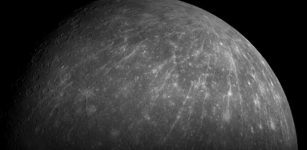Unknown Cloud ‘Absorbers’ Affect Venusian Albedo And Climate – New Study
Eddie Gonzales Jr. – MessageToEagle.com – An international team of researchers used satellites to assess in ultraviolet light the long-term variations in Venus’ albedo.
The study gives a better picture of that weather and how it is influenced by changes in the reflectivity of the clouds has emerged.
 A composite image of the planet Venus as seen by the Japanese probe Akatsuki. Image from the Akatsuki Orbiter built by Institute of Space and Astronautical Science/Japan Aerospace Exploration Agency
A composite image of the planet Venus as seen by the Japanese probe Akatsuki. Image from the Akatsuki Orbiter built by Institute of Space and Astronautical Science/Japan Aerospace Exploration Agency
“The difference between Earth and Venus is that on Earth most of the energy from the sun is absorbed at ground level while on Venus most of the heat is deposited in the clouds,” Sanjay Limaye, a University of Wisconsin–Madison planetary scientist and a co-author of the new study, said in a press release.
Additionally, in Venus’ clouds are mysterious dark patches (observed a century ago), dubbed “unknown absorbers” by scientists as the tiny particles that make up the patches soak up most of the ultraviolet and some of the visible light from the sun and thus affect the planet’s albedo and energy budget.
“The particles that make up the dark splotches, have been suggested to be ferric chloride, allotropes of sulfur, disulfur dioxide and so on, but none of these, so far, are able to satisfactorily explain their formation and absorption properties,” explains Yeon Joo Lee, the senior author of the new report.
The particles are about the same size and have the same light-absorbing properties as microorganisms found in Earth’s atmosphere, and scientists have long speculated about the possibility that the shadowy patches in the clouds of Venus are, in fact, microscopic life.
Whatever their composition, Venus’ “unknown absorbers,” according to the new measurements of the planet’s albedo, a feat led by Lee of the Technical University of Berlin, are having an effect on the planet’s weather. Lee and her colleagues, including Limaye, studied changes in Venus’ albedo using more than a decade of ultraviolet observations of the planet.
The new results of the changes in the planet’s albedo provide a link between solar heating and the powerful gusts that underpin the dynamics of the planet’s upper atmosphere.
“What really struck me about this paper is that it shows that Venus’ climate has decadal-long climate variations, just like the Earth,” says Venus expert Mark Bullock of the Southwest Research Institute and who was not involved in the new study. “Even more amazing, the strength of the climate oscillation on Venus is much greater than Earth’s long-term variations.”
“That is a striking result,” Limaye adds. “It suggests that something is changing. We can see the change in brightness. If the albedo is changing, something is driving those changes. The question is, what is the cause?”
Paper
Written by Eddie Gonzales Jr. – MessageToEagle.com Staff










